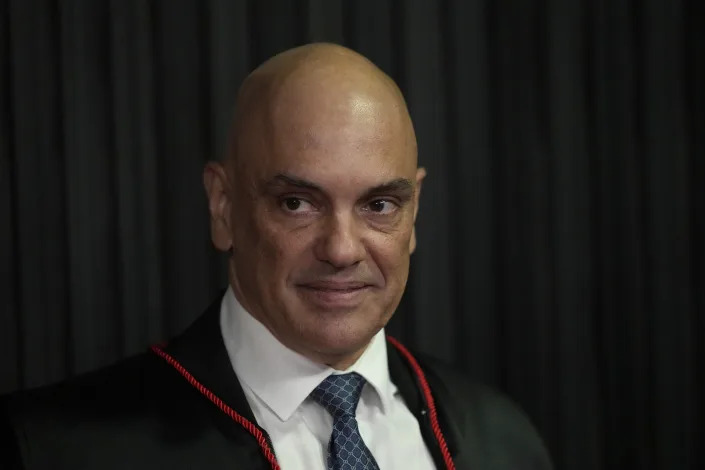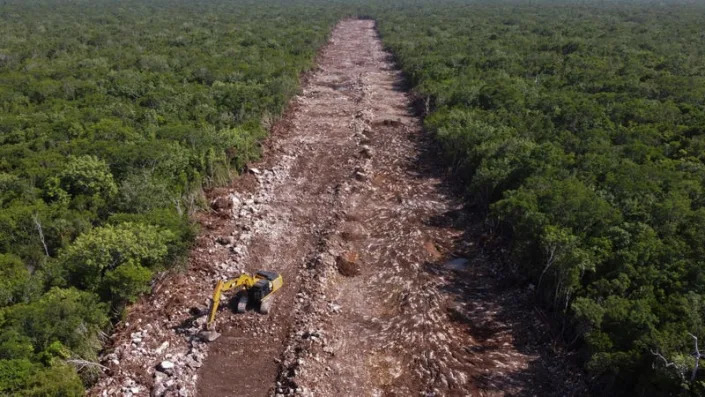HIV at center of latest culture war after Tennessee rejects federal funds
Kayla Collins, director of health and wellness at OutMemphis, gets ready to give HIV tests when people drop in for a weekly dinner. The funding for those tests may no longer exist once Tennessee stops accepting federal HIV prevention grants after May 31. (Andrea Morales for The Washington Post)
Ariana Eunjung Cha and Fenit Nirappil, (c) 2023, The Washington Post
Thu, January 26, 2023 at 10:26 AM MST·8 min read
Tennessee has rejected millions of dollars from the federal government for HIV/AIDS prevention - a move that public health experts worry will politicize the response to the disease and has the potential to destabilize decades of progress in getting the epidemic under control.
The controversy, which critics say was triggered by questions about the inclusion of transgender and abortion rights groups, is the latest example of Republican pushback against federal leadership and oversight that has resulted in clashes in areas that once had bipartisan support.
"This is something that is dangerous," said Greg Millett, director of public policy for Amfar, a leading AIDS nonprofit, and a former senior policy adviser in the White House Office of National AIDS Policy until 2014. "This is part of a larger backlash against public health we've been seeing in our country the past few years."
The tensions in Tennessee began in the fall, when Republican Gov. Bill Lee voiced disapproval of two HIV grant recipients spotlighted in conservative media - a task force on transgender health issues and Planned Parenthood. The conflict escalated late last week when the state announced that after May 31, it would no longer accept any money from the Centers for Disease Control and Prevention for testing, prevention and surveillance of HIV.
State officials said they would continue to support HIV testing and prevention but would focus on first responders, victims of human trafficking and mothers and children. In contrast, the federal program prioritizes men who have sex with men and transgender people, particularly in communities of color, who are at greatest risk of HIV, according to federal surveillance data.
"It's pretty hard not to think that part of the motivation is to restrict funding to groups we don't like and don't want to support," said Wayne Smith, who runs a faith-based HIV prevention program in Knoxville that will lose about $10,000 for testing each year.
Joseph Cherabie, an infectious-disease physician at Washington University in St. Louis who oversees an HIV prevention program, called the decision "a coordinated effort in order to try to dehumanize and stigmatize the LGBT community."
Those who have long battled HIV say they are fearful about the human cost. Indiana drew national scrutiny in 2015 when one rural county saw 200 new HIV cases in a short period driven by intravenous drug use, at a time when then-Gov. Mike Pence delayed allowing a clean needle exchange program. And in 2017, after then-Florida Gov. Rick Scott returned $54 million in unspent federal funds for HIV, the state saw the highest number of new HIV diagnoses in the United States.
For advocates of the gay and transgender communities in Tennessee, concerns about new disease outbreaks are magnified by the fact that Shelby County, home to Memphis, already has one of the highest rates of new HIV infections in the United States. Nationwide, about 35,000 new cases are reported each year.
Lee told reporters Friday that he still believes HIV prevention is "very important," but that "we think we can do that better than the strings attached with the federal dollars that came our way."
But neither he nor state health officials would explain why they decided to target new groups, how they planned to distribute state funding, or what shape their programs would take.
Health-care groups said the decision to forgo federal funding would allow state officials to elevate conservative organizations whose goals may be more about imposing their values on others because the state would no longer have to follow CDC guidelines on scientific, evidence-based medicine. They drew parallels to how "crisis pregnancy centers" backed by social conservatives advertise themselves as health-care entities but are primarily concerned with preventing women from getting abortions.
Tennessee has received about $8.3 million annually from the CDC for HIV prevention efforts. The governor's office said it is committed to maintaining the same funding levels.
CDC spokesman Scott Pauley said the agency had not received official notification from the Tennessee Department of Health withdrawing from the CDC's funding.
"We would certainly be concerned if the services people in Tennessee need to stay healthy were interrupted, or if public health capacity to respond to HIV outbreaks and bring an end to this epidemic were hindered," he said.
For several decades, HIV/AIDS had seemed to be insulated from the partisan politics that has created conflict and confusion for other health-care goals - over the coronavirus response, abortion rights, surgery that helps people transition to their self-identified genders, and even the expansion of Medicaid.
It was President George W. Bush who signed legislation in 2003 authorizing Pepfar, or the President's Emergency Plan for AIDS Relief, which some have described as the most effective government effort ever to address a global disease outbreak.
President Barack Obama helped reorient domestic strategy to focus on PrEP drugs to stop the spread of new infections and provided the means to make those medications available through federal funding and mandating insurance coverage. President Donald Trump continued that tradition in his 2019 State of the Union address, announcing an initiative to stop new HIV infections in the United States by 2030.
Some of the funds coming to Tennessee had in fact been authorized under Trump's plan, which concentrated resources on 50 "hot spots," including Shelby County, that are leading the country in new infections.
Even before Tennessee's decision, there had been other signs of a splintering of the bipartisan coalition supporting federal HIV surveillance and prevention policies.
In Texas, religious employers brought a suit arguing they shouldn't have to pay for HIV-prevention drugs that are mandated by the Affordable Care Act, and in September, a federal judge sided with them, citing the right to religious freedom. And in West Virginia, state and local officials imposed new barriers on sterile-syringe programs targeted at reducing the spread of HIV even as the Biden administration has pushed to expand them.
Jeremiah Johnson, acting executive director of PrEP4All, an HIV advocacy group, pointed out that the lifetime cost of a single new HIV infection is estimated at $500,000.
"It's always disconcerting when we end up being considered less important to invest in, and less important to invest our health-care concerns. It's a slippery slope. . . . Whom does public health serve?" he asked.
But community groups say the battle isn't over.
Molly Rose Quinn, executive director of OutMemphis, Tennessee's largest LGBTQ health organization, said groups across the state are trying to figure out alternative funding and exploring whether the grants could bypass the state and be administered by a county or other municipality that would partner with community groups.
"A state choosing to back away from federal money for health care - if they do get away with it - could introduce a very dangerous pattern," she said. Her group has received $180,000 from the CDC program for HIV testing.
"We're just really freaked out honestly," Quinn added. "We are concerned not only for the people we serve directly, but statewide, the HIV transmission rates are alarming in this part of the country."
The issue that blew up the Tennessee program was unrelated to HIV prevention.
Groups that relied on the grants said they had operated mostly without controversy until October, when they were pulled into a conservative firestorm over surgeries at Vanderbilt Children's Hospital's transgender care clinic in Nashville that help people transition to the gender that matches how they identify. An article on a conservative news site falsely accused Planned Parenthood's Memphis clinic of conducting such surgeries on youths, as well, and a transgender task force getting CDC funding was accused, again falsely, of starting as an HIV prevention group but then expanding "to promote transgender surgeries and abortion."
Lee, who was running for reelection as governor, promised a "thorough investigation."
He disavowed and defunded the task force, citing its "extreme ideologies." The group had been created in 2018, before he took office, to develop HIV prevention programs for transgender people and sought to provide a guidebook of trans-affirming health-care providers and webinars. It had received $10,000 annually from the CDC grant. Around the same time, Planned Parenthood officials said that they were told they would no longer receive HIV tests from the state to distribute to their patients and that a free-condom program they had managed for decades would lose its $225,000 annual funding.
"The attacks are getting worse and worse, day by day in our community," said Ray Holloman, who chairs the nine-member Task Force for Transgender Health.
Ashley Coffield, president and CEO of Planned Parenthood of Tennessee and North Mississippi, said that ending the AIDS epidemic requires a coordinated federal strategy, rather than one-off efforts by a single state - especially one that borders so many other states. She worries about new disease outbreaks "not just in the highest risk, but in the general population."
"Walking away from these programs could take HIV back a generation," Coffield said.













